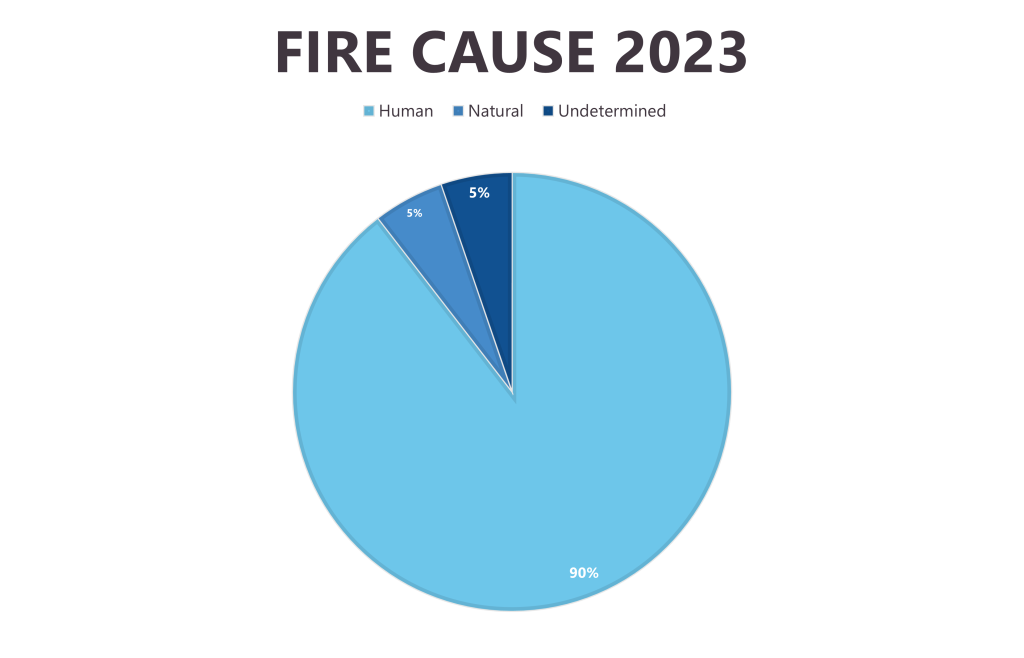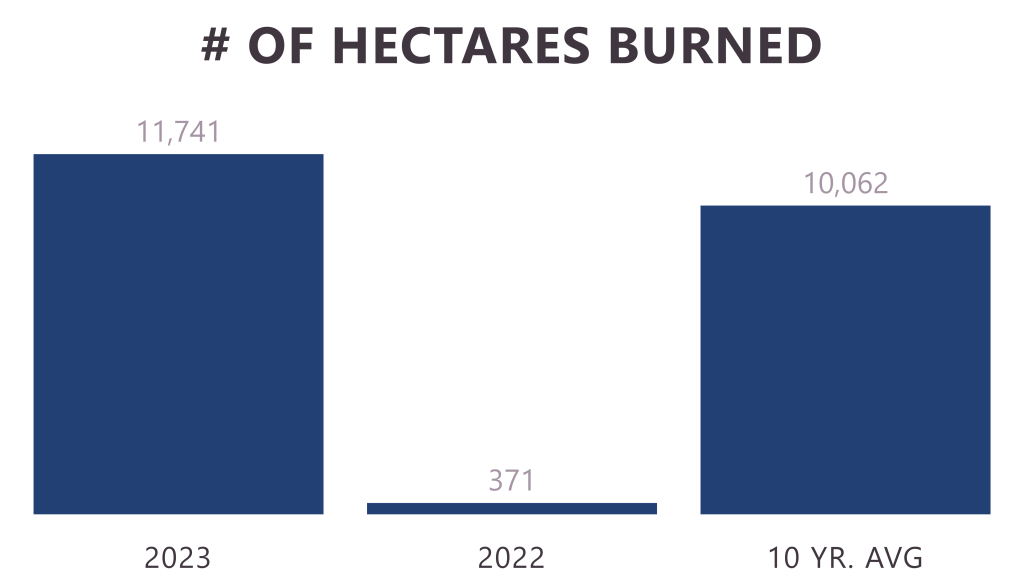The BC Wildfire Service continues to respond to elevated fire activity in the northeast corner of the province. In addition, the organization remains on standby for flood support operations and has deployed a 16-person incident management team and several structure protection resources to Alberta.
An unseasonably strong ridge of high pressure will build over British Columbia beginning Friday and persist through the weekend. This will mean summer-like conditions with temperatures forecast to be several degrees above seasonal normals, likely breaking temperature records for mid-May.
Watch BC Wildfire Service Superintendent of Predictive Services, Neal McLoughlin provide an update on what this weather will mean for wildfire conditions across the province, including areas of particular concern in the northeast.
Weather forecast
The upper ridge starts to gain momentum today with temperatures pushing upward through all areas with relative humidity values falling. Light and variable winds in most areas with occasional gustiness, and convective potential moving east, could see clusters of storms in the Peace region.
Daytime maximum temperatures are expected to reach into the low to mid 30s over the Southern Interior while highs across the Central and Northern Interior will approach the high 20s or low 30s.
The ridge is forecast to persist well into next week delivering several consecutive days of hot, dry weather. While there remains uncertainty with the eventual dissipation of the ridge, current forecast models are indicating a shift to a cooler and more unsettled pattern near the end of next week, around Thursday May 18.
Wildfires of Note
- Red Creek (G80223)
- Boundary Lake (G80220)
- Teare Creek (G30210)



Fire bans and restrictions
| Fire Centre | Campfires | Category 2 Open Burning | Category 3 Open Burning | Forest Use and Area Restrictions |
|---|---|---|---|---|
| Cariboo Fire Centre |  |  |  | N/A |
| Coastal Fire Centre |  |  |  | N/A |
| Kamloops Fire Centre |  |  |  | N/A |
| Northwest Fire Centre |  |  |  | N/A |
| Prince George Fire Centre |  |  |  |  |
| Southeast Fire Centre |  |  |  | N/A |
The next Provincial Wildfire Status Update will be provided on May 18, 2023.
Fuel types in northeastern B.C.
Bryan Bowman is the Fire Behaviour Specialist on the Incident Management Team that is currently based out of Fort St. John, responding to the North Peace complex. The complex consists of the Boundary Lake (G80220), Red Creek (G80223) and Cameron River (G80175) wildfires.
Located in the northeastern part of the province, the fuel types in the area range from stands of Black Spruce, to mixed coniferous and deciduous stands, as well as large areas of blow-down and agricultural lands.
In this video, Bryan talks about the fuel types on the Red Creek wildfire which is located approximately 32 kilometres northwest of Fort St. John, and discusses the conditions on site and how fire behaves in these fuel types. He also highlights the challenges of working in these fuel types, including the risks it poses to response personnel and the potential effects that the forecasted warming and drying trend and potential increase in windspeeds could have on the rates of spread and fire behaviour when combined with the fuel types on the Red Creek wildfire.
BC Wildfire Service Flood Support
The BC Wildfire Service is being increasingly called upon to support communities with hazard response outside of wildfire. Members of the Sentinel unit crew were deployed to support with flood response in Grand Forks last week. BC Wildfire Service crews were also supporting similar operations in Cache Creek, Lumby, Midway, Lower Nicola and Salmo.
Learn more about what flood support looks like on the ground in this brief video.
